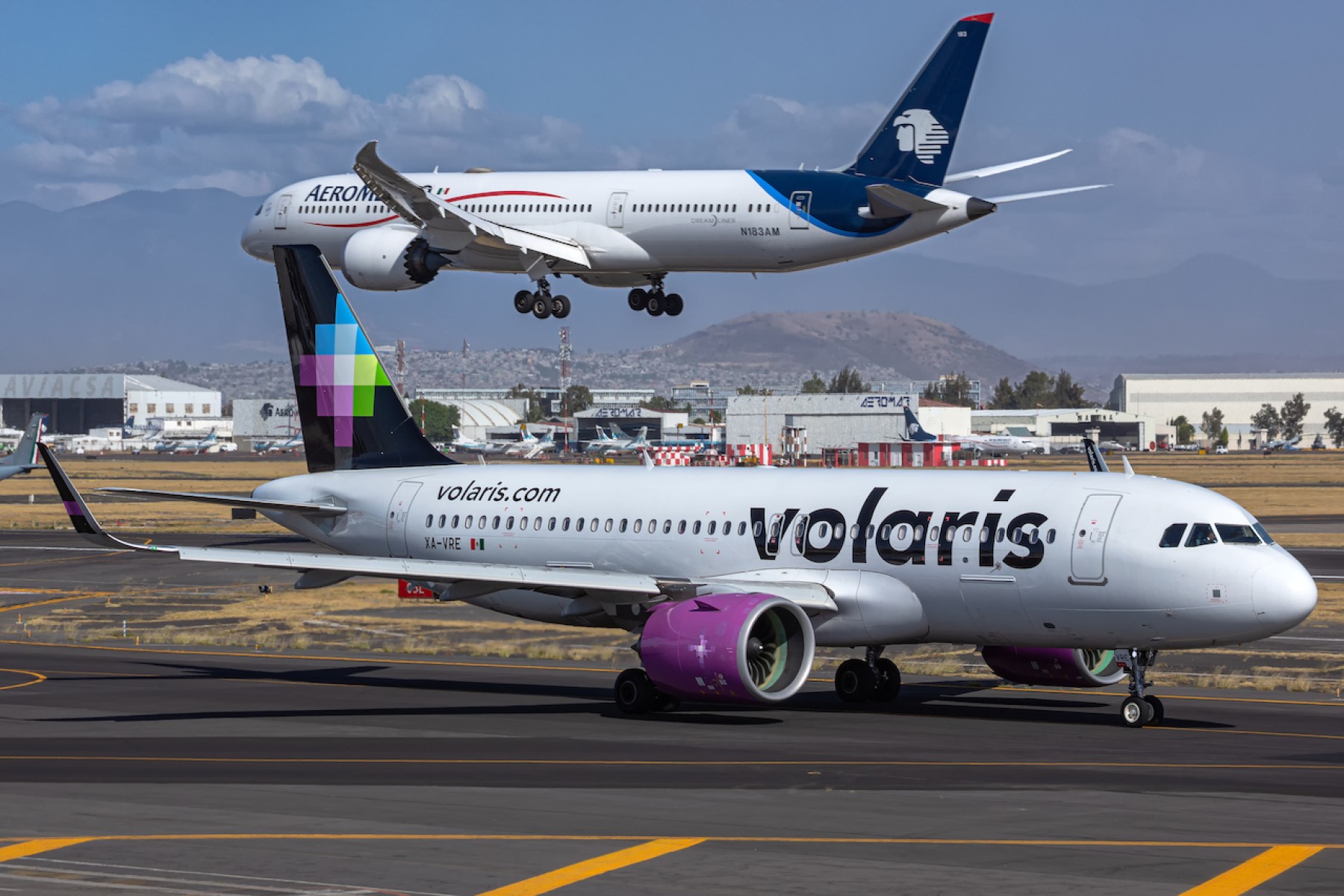RIO DE JANEIRO, BRAZIL – Mexico’s airline industry readjustment due to the pandemic has led low-cost airlines to concentrate half of the commercial fleet, a trend driven by the contraction of mainline airlines leaving a capacity gap that this segment is looking to fill.
At the start of the first quarter 2020, low-cost Viva Aerobus and Volaris operated 34% of the passenger airacraft fleet. In the same period this year, the ratio has risen to 50%. Both companies’ aircraft in operation increased by 9% in relative terms, while the overall domestic air fleet declined 26% in the same period, according to Ministry of Communications and Transportation (SCT) figures.

In absolute terms, Viva Aerobus was the airline incorporating the most aircraft (6), followed by Volaris, with 5 new aircraft. Interjet underwent the most drastic adjustment, from a fleet of 68 aircraft to none registered with the SCT, while Aeromexico – together with its Aeromexico Connect unit – pulled 24 aircraft out of operations, almost a fifth of its fleet.
The adjustments led mainline airlines to shrink by 48%, losing a total of 92 aircraft last year.
For Fernando Gómez Suárez, airline industry analyst, the increase of Volaris and Viva Aerobus aircraft reflects the companies’ goal of targeting a market that has been left unattended by the unexpected departure of Interjet, along with a search for greater operating efficiency.
“The advantage of having new aircraft is that they reduce operating costs; they consume less fuel, require less maintenance and are more efficient compared to older aircraft,” he explains.
Regional airlines have also reduced their operating capacity by 6 aircraft, which despite being a low number compared to the losses of other segments, is almost one-fifth of the fleet they had before the pandemic.
Of this segment, TAR Aerolineas is the airline that stopped operating the most aircraft, with 3. Aeromar, Magnicharters and Aero Calafia pulled 1 aircraft each from their fleets.
Gómez Suárez believes that for this particular segment there is little financial margin to add or subtract aircraft. “It is more difficult because, unless these are airlines developing successful routes, such as cross-border or certain successful regional markets, they have abandoned the routes they cover, and it is difficult to adapt the fleet because it is very limited,” he says.
Low-cost airlines are going for more
Low-cost airlines’ perception of the Mexican market’s evolution has prompted them to plan to close the year with even more aircraft.
Viva Aerobus, which currently operates 45 aircraft, plans to add 6 more units over the course of 2020, closing the year with 51 aircraft, some operating before the summer, said Juan Carlos Zuazua, the airline’s CEO.
Similarly, Volaris expects to close the year with 98 aircraft, adding an additional 8 to the initial plan of 3 new aircraft.
“Those aircraft would be entering mainly in Volaris’ core markets: Mexico City, Cancún, Guadalajara and Tijuana in the domestic market, and to the United States, with a very important emphasis on Mexico City’s International Airport,” said Enrique Beltranena, the airline’s CEO.
However, in this environment Aeromexico – which plans to add 28 new aircraft by 2022 – has the potential to rebound and stay ahead in terms of capacity, according to Gomez Suarez, particularly because of the segment it serves. “It has the largest air fleet, and may dominate or rebound and fight for the ranking with Volaris,” says the specialist.

